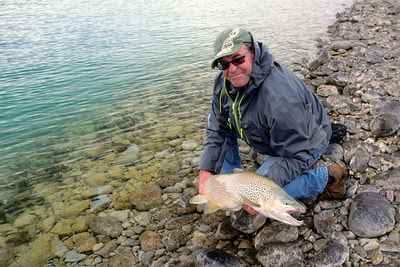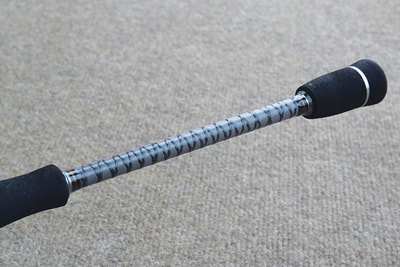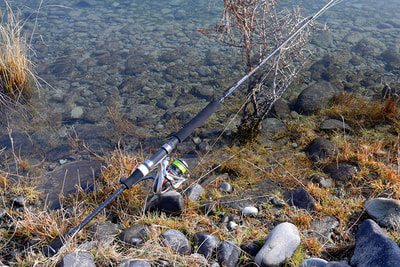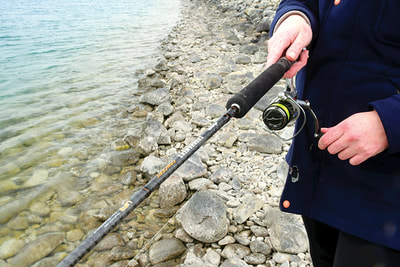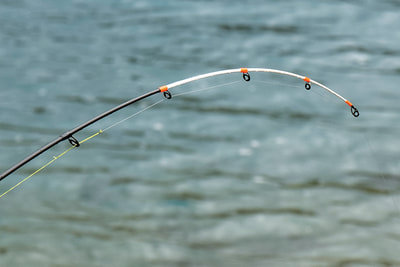Reviewed by: Tony Dawson SPECS:
Okuma Tournament Concept UFR 802L Rod Unidirectional fibre reinforced graphite blank Single foot silicone carbide guides Graphite reel seat EVA grips and butt cap Length: 8' - 2pc Line weight 3 – 6kg Lure weight: 4 – 14g Okuma Helios HSX-30 Reel C-40X graphite frame C-40X graphite side plates C-40X graphite Cyclonic Flow rotor Precision elliptical gearing Torsion Control armour Gear ratio: 5.0:1 Retrieve: 69cm of line per wind of the handle. Bearings: 8HPB + 1RB Line capacity: 0.20mm/300m Weight: 202g Drag: 6kg |
When I knew the Okuma combo was on its way I was both curious and a little bit excited, not least because it meant another trip to the South Island Hydro Canals to put more freshwater gear to the test. Why? Well, the Okuma Tournament Concept was touted as a serious canals rod; Bryce Helms had fished with the rod and reel combo very recently and had probably caught yet another monster – something he’s very good at. The rod came paired with the Okuma Helios HSX 30 reel.
Out of the box, it became apparent that this rod was something quite different – unique. Once assembled it reminded me of a rod I came across some years ago which both caught my imagination and proved its worth, so much so that I had to have one. Was the Tournament Concept going to be another one of those rods? Appearances count for something – at the very least, creating first impressions. The rod has some unique finishing that sets it apart instantly. It sports a split EVA grip, and the blank at the grip end is finished with a raised carbon tape braided wrap around the rod. The carbon grey finish of the blank tapers to a very fine tip section which abruptly changes to a white finish with orange bindings for the final 33cm. This looks dangerously fragile ... but what time and use revealed is that both looks and first impressions can be misleading. The rod’s construction utilises technology called Unidirectional Fibre Reinforcement which creates an outer layer of longitudinal carbon fibres around the blank, producing exceptional strength and power in what appears and feels to be a rather soft and skinny rod tip. What results is something unexpected and a bit scary to watch – but more about that shortly. The other feature of the rod’s construction that to my mind is a real winner is the high quality and well-designed single foot inlaid guides (9 + tip) with silicon carbide inserts. They look very cool and are the best I’ve seen on any rod in recent times. There were a couple of design features that had me scratching my head, though: the really long and quite robust foregrip seemed to me to be excessive and unnecessary on a freshwater rod. Even handling extra-large canal specimens the foregrip wasn’t required and the locking ring thread between the reel seat and the foregrip was a bit annoying. A shorter, more refined rotating foregrip as a locking mechanism would have been far more pleasing and would also improve the balance of the rod in hand. Don’t get the wrong idea though; this is a quality rod with some amazing properties. The Helios HSX 30 reel is a bit unique and different, as well. First up, its construction is mostly from C-40X graphite and aluminium, creating a very light but well-engineered unit. The reel frame and the body side plates are independent graphite components designed to minimise torsion and flex under load, and the gearing is Alumilite alloy with a brass pinion. The rotor is ported and made of the C-40X graphite, while the bail wire, spool and handle are aluminium. It boasts 8 HPB (that’s high performance double-shielded stainless steel ball bearings) and 1 roller bearing. A smooth and progressive carbon drag completes the features. And it’s always reassuring to receive additional spacer washers in the box for the spool, to allow the angler to adjust the laying of line from the bail roller to suit either braid or nylon monofilament. The lightness of the reel is remarkable, but it doesn’t have quite the same solid feel as the other reels I’ve fished with of late. It definitely has a degree of flex in the frame, but I can’t say that this made any noticeable difference to the function or reliability of the reel; it just had a different feel, the result of the materials used in manufacture, I’d say. The operation was smooth and the handle grip was comfortable, the bail closing wasn’t clunky, and the drag was smooth and reliable on fish towards the 20 lb mark – the 6kg of drag available is plenty for trout up to and over 30lb. So what is it about this rod and reel combo that was so intriguing? It’s the incredible lightness and the unexpected strength, power and sensitivity of the setup. Let me explain. As the rod lay set up, with the grip on the rear parcel tray of my car and the tip on the dashboard, the tip section of the rod gently twisted in multiple directions to accommodate the weight of the rod and the contour of the dash. The rod tip is really, really bendy. It’s also really thin, and could best be described as a slow action – but it’s actually incredibly tough, and the rod, strangely, possesses some quite impressive power. For a soft foldaway tip section the rod also has very good sensitivity, great for detecting those soft salmon takes. That is such an unlikely combination! I’m not sure how that mixture of characteristics has been achieved in one rod; it can only be the UFR technology. I fished the combo for several days and caught quite a few fish, some certainly big enough to test the rod and the reel. The rod has an amazing ability to absorb punishment; you can point-load it without fear of a broken rod tip. And yet somehow there’s sufficient power in reserve in the blank to subdue really big fish. With this setup you could softbait in the salt from a boat and easily subdue big snapper, I should think. And it was light enough to use for extended periods of time without fatigue or discomfort. The white rod tip was great to focus attention on for the cues to detect takes, but every bump was felt through the rod anyway. The 8’ length is a comfortable size for canal fishing and the rod blank characteristics make for effective casting of light jigheads over good distances; the length aids in control of the drifting egg patterns or softbaits and the extra height when held aloft is a benefit in line control on the drift, and when managing hooked fish. What an extraordinary combination; every bit an effective canal fishery combo but quite intriguing and unusual at the same time. I’m still smiling while I finish writing this. Maybe I do need another one of these unusual rods, after all! |

